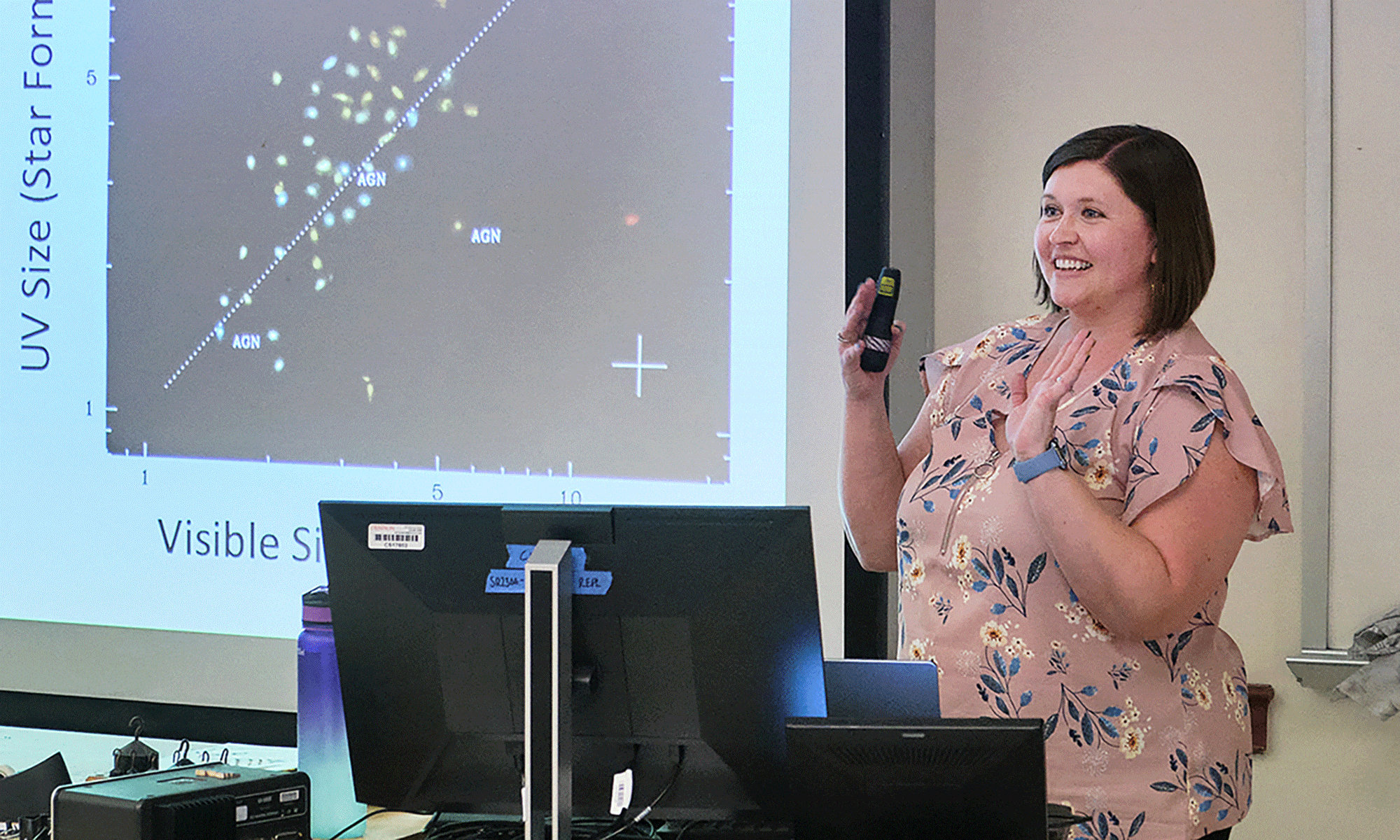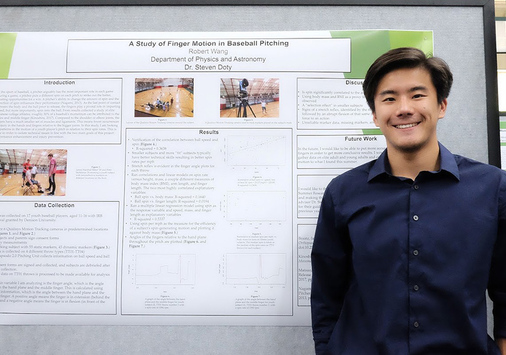
During a visit to Denison’s physics department in the spring of 2024, Laura DeGroot, a physics professor from the College of Wooster, discussed the events that occurred during the “cosmic noon,” a period between 10 to 11 billion years ago when galaxies underwent an era of intense star formation.
After cosmic noon, observations of galaxies show a transition from formations that were “increasingly clumpy” to those of large disks and spheroids. This morphological, or structural, transformation and increase in galaxy sizes offer insights into the physical processes involved in the build-up of galaxies over cosmic time.
DeGroot discussed how ultraviolet and visible light measurements of galaxy images by the Hubble and James Webb space telescopes are analyzed to investigate the theory of inside-out formation of galaxy disks at 1.5 < z < 3.0.
She also explained how constructing and analyzing radial profiles of 2D color maps of galaxies allow us to quantify the impact of dust extinction and metallicity gradients on the observed colors and sizes of the galaxies.














